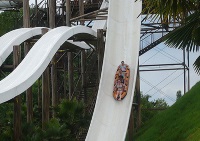
On the Lido de Jesolo is Aqualandia, an extremely popular water and theme park that has been earning rave reviews from visitors to Italy. Aqualandia is situated on an island near Venice, and just strolling around the place and lounging on the beaches is an adventure. Much more than a water park, Aqualandia has something like 26 attractions, including one of the highest water slides in the world and one of Europe's highest bungee jumping towers. All the expected, tried and tested water park attractions can be found, as well as lots of extra entertainment.A huge central pool is the hub for swimming and relaxation on the many comfortable loungers, and there are some fun shows and music events as well as lots of restaurants and shops, and the popular Vanilla Club for those who want to party. There is plenty to entertain people of all ages. A fun day at a water park is a great treat for children and a nice break from traditional cultural sightseeing. All attractions, shows and activities are included in admission, except bungee jumping. In the peak summer period visitors should be prepared for long queues; it is best to arrive early to avoid a long line at the entrance.
Address : Via Buonarroti 15, Lido de Jesolo
Website : www.aqualandia.it
Transport : By car, exit the motorway before reaching Mestre; take the Mestre bypass toward the Marco Polo Airport. Continue along this road to Jesolo and follow the road signs to Lido di Jeselo. Signs to Aqualandia are displayed prominently.
Opening times : Opening dates and times vary seasonally, but when open the park is generally open between 10am and 6pm. Check website for details.
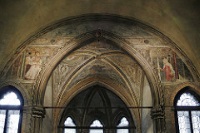
This great Gothic Franciscan church was constructed in the 14th century, and is primarily known as the burial place of Titian and the Venetian sculptor Antonio Canova. Titian's tomb in the south aisle watches over the large marble pyramid created for Canova. The interior of the church is adorned with the works of a number of famous artists. These include Donatello's St John the Baptist, Giovanni Bellini's triptych of the Madonna and Saints, Titian's famous Assumption of the Virgin and his Madonna of Case Pesaro. There is an audio guide available for a small additional cost, and for those interested in the art and architecture this is a great addition to a visit. Look out for lovely little details, like the individually designed choir stalls.Venice is packed with impressive churches and it can be rather hard to select which are worth seeing - the Basilica dei Frari (St Mary of the Friars) is well worth the effort for art lovers and anybody interested in Gothic architecture. The church receives rave reviews from tourists and is consistently one of the top rated attractions in Venice according to visitor reviews. Despite this, the church is seldom crowded and it is usually possible to soak up the special atmosphere and incredible art work in peace and silence.
Address : San Polo 3003
Website : www.basilicadeifrari.it
Telephone : +39 041 272 8611
Opening times : Visiting hours of the Basilica on weekdays 9am to 6pm; Sundays from 1pm to 6pm.
Admission : The entrance fee for the visit to the masterpieces of the basilica is €3
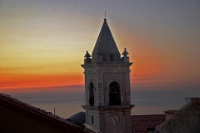
Originally built in the 9th century, this 318-foot (97-metre) bell tower is the highest structure in Venice and offers visitors breathtaking views of the cupolas of St. Mark's, the lagoon, its neighbouring islands and the red rooftops and church domes of Venice. When the air is clear, one can even spot a snow-capped peak of the distant Dolomite Mountains but, strangely enough, not one canal can be seen from this bell tower. Despite the fact that Venice appears to be a dry city from this vantage point, the tower once served as a kind of lighthouse to assist navigation on the lagoon, and the views of this piece of water are magnificent. The tower collapsed unexpectedly in 1902 and was rebuilt exactly as before, even rescuing one of the five historical bells that are still in use today (each bell was rung for a different purpose, such as war, the death of a doge, religious holidays, etc). The bell tower is extremely popular, for good reason, and queues for visitors can get very long, especially on weekends, so it is best to visit during the week if possible and to arrive early to avoid the crowds. Be sure to take along your camera! Kids will love this attraction as well, so it is a great outing for the whole family.
Address : San Marco, Piazza San Marco
Website : www.visit-venice-italy.com/bell-tower-venice-italy/bell-tower-saint-mark-venice-opening-hours-visit-price.htm
Telephone : +39 041 270 8311
Opening times : Open November to April from 7am to 3.45pm; and in July to September from 9am to 9pm.
Admission : €8 (adults)
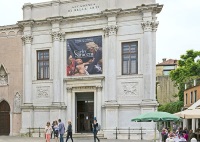
This famous gallery was established in 1807 to house the artwork removed from Venetian churches and public buildings on Napoleon's orders. It is housed in three old religious buildings: the Scuola Grande di Santa Maria della Carità, built in 1344; the Church of the Carità; and the Convento della Carità, a monastery begun in 1561 but never quite completed. The Gallerie dell'Accademia houses one of Europe's finest art collections. Its display follows the progression of Venetian art from the 14th to 18th centuries. Notable works in the gallery include Paolo Veneziano's Coronation of Mary, Carpaccio's Crucifixion and Apotheosis, Giovanni Bellini's Madonna with Child between Saints Catherine and Mary Magdalene, Giorgione's Tempest, Lorenzo Lotto's Portrait of a Young Gentleman in His Studio, Paolo Veronese's Feast in the House of Levi, and Tintoretto's Theft of St Mark's Body and Crucifixion.Unfortunately, art lovers may find that the gallery has insufficient information on all its treasures, and most of what there is is in Italian; it is a good idea to hire a tour guide, especially as the amount of art can be overwhelming and it is useful to have someone to point out the highlights. The collection also marks many historical events for Venice and a local guide can explain the subject matter and significance of the work.
Address : Dorsoduro 1055
Website : www.gallerieaccademia.org
Telephone : +39 041 5200 345
Opening times : Mondays 8.15am to 2pm. Tuesday to Sunday 8.15am to 7.15pm.
Admission : €12, concessions available.
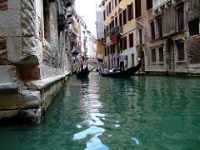
Surely one of Italy's most iconic images is that of gondolas being oared through the narrow canals of Venice by stripe-shirted, serenading gondoliers. These flat-bottomed boats are unique to the canals and waterways of Venice, and taking a ride in one is considered by many to be an obligatory tourist activity while on holiday in Italy. Although you will pay dearly for the experience (roughly €80 - €90 for a 40-minute trip), taking a gondola ride in Venice is sure to leave you with a warm and lasting memory of your vacation in Italy. Tourists are encouraged to make the most of the investment, however: take a trip down the back canals of Venice, and not the Grand Canal which is too crowded and impersonal; pick an ornately-carved gondola, with a comfortable seat and blankets if it's cold; and be sure to ask your gondolier if he is of the singing variety before getting into the boat - although it is compulsory for them to wear black pants, striped shirts, closed shoes and (weather-permitting) their straw hats, they are not actually required to sing.Gondolas are available throughout Venice and can be hailed as one would an ordinary taxi. If you book one through a hotel or tour company, you will probably end up paying a surcharge.
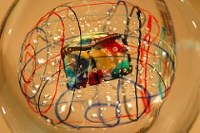
The Venetian Islands of Murano, joined by several bridges, make for a great trip for the whole family and the perfect place to seek out special Venetian souvenirs. In 1291 all the glass makers in Venice were sent to the islands for fear of fires starting in the wooden buildings of the city, and Murano has been a centre of glass crafts ever since. Visitors can enjoy watching the local art of glass-blowing, developed over the centuries in the place that made Venetian glass so famous and sought-after, and be amazed by the products that are created. And since glass-blowing is the thing to do on Murano, there are plenty of glassware shops and factories, most of which can be visited free of charge and where visitors can get some souvenirs to take home, or else simply enjoy looking around. The Museo Vetrario is another great place to admire glassworks.Murano has more than just glassware on offer: it is a picturesque mini-Venice with its own Grand Canal, colourful old buildings and great restaurants. It is small and best explored on foot or by boat. There are also some interesting churches to visit: the Basilica dei Santa Maria e San Donato has stunning 12th-century mosaics; and the Church of Saint Peter the Martyr, built in the 12th-century, houses two art works by Bellini.
Address : Isola di Murano, Venice
Transport : Via vaporetto: line 41, 42 or DM from Fondamente Nuove; or 71 and 72 from San Zaccaria or Piazzale Roma
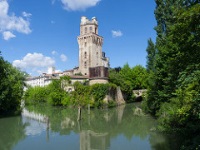
Padua is often tragically overlooked due to its close proximity to Venice; it is also almost always described in terms of comparison with Venice. Luckily, Padua, once second only to Rome in terms of wealth, is a gorgeous city with lots to offer visitors and plenty of charm all of its own. The fabulous architecture of the old town, dating back as far as 1,000 AD, is a magnificent backdrop for the wealth of culture the city contains. The main attraction is the cathedral dedicated to St Anthony. The high altar is decorated with bronzes by Donatello, who is also responsible for the proud equestrian statue of General Erasmo da Narni (il Gattamelata) that stands in the Piazza del Santo. Padua also has picturesque canals, a number of interesting markets, and many impressive landmarks. It is a city seemingly full of beautiful frescoes, with many lovely churches to house them. It also boasts Europe's oldest botanical garden, established in 1545. Some people argue that the city also has a more fun and festive nightlife than Venice, due to its youthful population - the University of Padua is Italy's second oldest, established in 1222. Padua is situated just 21 miles (35km) west of Venice, and is a very worthwhile daytrip destination.
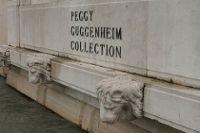
The Peggy Guggenheim collection is housed in the former Palazzo of the wealthy American heiress, the Palazzo Venier dei Leoni, situated on the Grand Canal, and has become one of the most illustrious collections of modern art in Italy. It spans the artistic movements of Cubism, European Abstraction and Surrealism, with notable works by Brancusi, Marino Marini, Kandinsky, Picasso, Magritte, Rothko, Max Ernst, Dali, Jackson Pollock and many more. The impressive permanent collection is further enriched by temporary exhibitions of high quality. Guggenheim built up her collection between 1938 and 1947, and bought the Palazzo Venier dei Leoni in 1948, where she lived until her death in 1979. This exciting, prestigious and often bizarre collection is a great departure from the overwhelming amount of Gothic, Byzantine and Renaissance art and architecture in Venice, and exploring the museum is a fun and atypical sort of way to spend a few hours in the city. There are wonderful views of the Grand Canal from the terrace and there is a good little gift shop and popular cafe at the palazzo. The small outdoor area showcases a number of sculptures and has some pleasant spots to rest and take in the surroundings.
Address : Palazzo Venier dei Leoni, 701 Dorsoduro
Website : www.guggenheim-venice.it
Telephone : +39 041 240 5411
Opening times : Open daily 10am to 6pm. Closed Tuesdays.
Admission : €15. Concessions are available
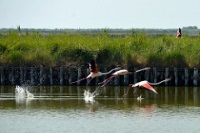
Italian National Parks may be different to what some foreigners expect in that they are not fenced in, pristine wilderness areas, but large inhabited swathes of land deemed worthy of environmental protection. The vast Po Delta, a flatland along the Adriatic coast, is one of the most stunning natural landscapes in Italy. The Po Delta is divided into two regional parks, the Emilia-Romagna and Veneto. The latter, easily accessible from Venice, encompasses woodlands, extensive farmlands, marshes, lagoons, beaches and rivers, as well as historical monuments and even cities.Visitors to the Po Delta Natural Park can enjoy a day exploring the great outdoors. Discover the park by bike, boat, canoe, horseback or on foot. Tours are also available for those who want to visit the more protected areas of the park, and avid fisherman can enjoy the fishing lagoons, where bream, bass and grey mullet are plentiful. There are great bird-watching opportunities here too, so pack your binoculars. There are many areas to camp and wonderful walking trails. Travellers exploring Venice, who feel they would like some experience of the natural wonders of the region, will be delighted with Po Delta, and it is a great excursion for those travelling with kids.
Address : Ca Vendramin
Website : www.parcodeltapo.org
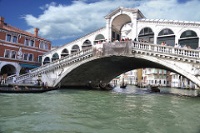
One of Venice's most iconic landmarks, the Rialto Bridge has long been the commercial core of Venice and is often described as the heart of the city. It is the oldest bridge spanning the Grand Canal, and is one of only four that do. The structure standing today is over 400 years old, but it isn't the original bridge: the original wooden bridge collapsed under the strain of crowds gathered here to admire a wedding procession long ago, legend has it; it was replaced by the (sturdier) single stone arch design of Antonio da Ponte, built in 1588. Whether you're sailing under it, or walking over it, the Rialto Bridge is a must-see in Venice. Today the Rialto area still resembles the bustling fruit and vegetable market of former times, but is additionally swamped with tourists and accompanying souvenir shops and gift kiosks, and it is possible to find almost anything in the markets these days. It gets very crowded but is definitely worth a visit and will delight those who enjoy bustling markets with surprises round every corner. If you are visiting Rialto to take pictures of the bridge or explore the area for the first time it is best to go early in the morning when the throngs of visitors won't disturb you. There are lots of lovely restaurants and cafes in the area as well.
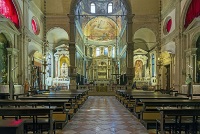
A 'scuola' in Venice was a mixture of guild and religious fraternity, where members paid annual fees to support fellow members and to decorate the school's premises. The School of St Roch is known for the canvasses of Jacopo Tintoretto that adorn its interior. Tintoretto was commissioned to decorate the School in 1564, and dedicated 23 years to this task. The paintings are arranged in chronological order that can be followed by beginning on the second floor in the Sala dell'Albergo. Notable among his works are the scenes from the Life of the Virgin and the Crucifixion. San Rocco, as the school is known, is one of the top ranked attractions in Venice on tourist review sites and a visit is guaranteed to impress. Although much of the amazing art inside is not labelled or accompanied by much information there is a good audio guide included in the admission price which tells you all you need to know. Many of the rooms are full of mirrors to help visitors see the intricate detail of the art which covers the ceilings and walls without craning their necks. The interior is ornate and quite overwhelming in its artistry and you would be hard put to find somebody who doesn't rave about the experience of exploring San Rocco.
Address : Campo San Rocco, San Polo 3054
Website : www.scuolagrandesanrocco.it
Telephone : +39 041 523 4864
Transport : San Toma stop on the Vaporetto lines, or take the train to St Lucia railway station.
Opening times : The Scuola Grande is open daily from 9:30am to 5:30pm, except on New Year's Day, Easter and Christmas Day. The church is also open daily from 9:30am to 5:30pm. Holy Mass is generally at 8am on weekdays and 11am on Sundays and religious festivals.
Admission : €10 (with concessions available). Entry to the church is free.
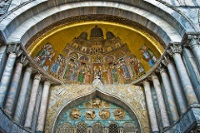
St Mark's Square (Piazza San Marco) has always been the nucleus of Venice. The city's first citadel and church were erected on its stony foundations: the Palazzo Ducale and the Basilica di San Marco, respectively. The Basilica di San Marco is a unique juxtaposition of Byzantine, western European and Islamic architectural styles. The Basilica's most precious relic is the Pala d'Or, a Venetian-Byzantine gold relief adorned with precious gems. Travellers and pigeons flock to the Piazza with equal zeal. It is the tourists, however, who pay dearly to eat or drink at the elegant cafes that spill onto the pavements. The pigeons are an attraction in themselves for children, and if you are travelling to Venice with kids they will relish the chance to feed the birds in this romantic place. Designer shops line the streets that radiate from the square. There are worthwhile places of interest to explore beyond the square that include the Museo Correr, the Archaeological Museum and the Museo del Risorgimento, which are housed within the Procuratie Nuova. Attached to the Procuratie Vecchie is the triumphal Torre dell'Orologio. The adjoining archway guides one through to the Mercerie, Venice's main commercial street, that stretches to the famous Rialto Bridge.
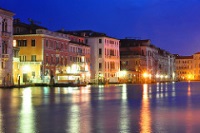
Venice's main waterway splits the city in half, with sestieri in equal parts to the west and east of it. It is the hub around which much activity in Venice is concentrated and is encircled with the elegant facades of the palazzi, which testify to the city's past opulence. Many of the picture-perfect scenes that make Venice famous can be discovered along the Grand Canal.The best way to explore the architectural splendour of these Renaissance buildings is on board a vaporetta. Pedestrian access across the canal is only provided along three bridges situated at the station, Rialto and Academia. Gondolas cross the canal at regular intervals and provide a romantic interlude to the sightseeing itinerary. Although a gondola ride along the Grand Canal is glorious, it is often better to explore the smaller waterways by gondola, as the Grand Canal can become crowded and stressful in peak season.Grand Canal palaces and buildings to look out for include the Ca da Mosto, with its rounded arches in low relief; the 'House of Gold' (Ca d'Ora), a beautiful Gothic building constructed between 1424 and 1430; and Palazzo Corner-Spinelli and Palazzo Vendramin Calergi, which combine classical and Byzantine elements designed by Mauro Codussi. Architect Jacopo Sansovino was inspired by Codussi's style and infused this in his creation of the Palazzo Corner (Ca Granda). Another notable Palazzo is the Grimani di San Luca, designed by Michele Sanmicheli.

01474 814411

Travel Guide powered by Word Travels, copyright © 2023 Globe Media Ltd. By its very nature information in this travel guide is subject to change at short notice and travellers are urged to verify information on which they're relying with the relevant authorities. Neither Globe Media Ltd nor Travel Vogue can accept any responsibility for any loss or inconvenience to any person as a result of information contained above.